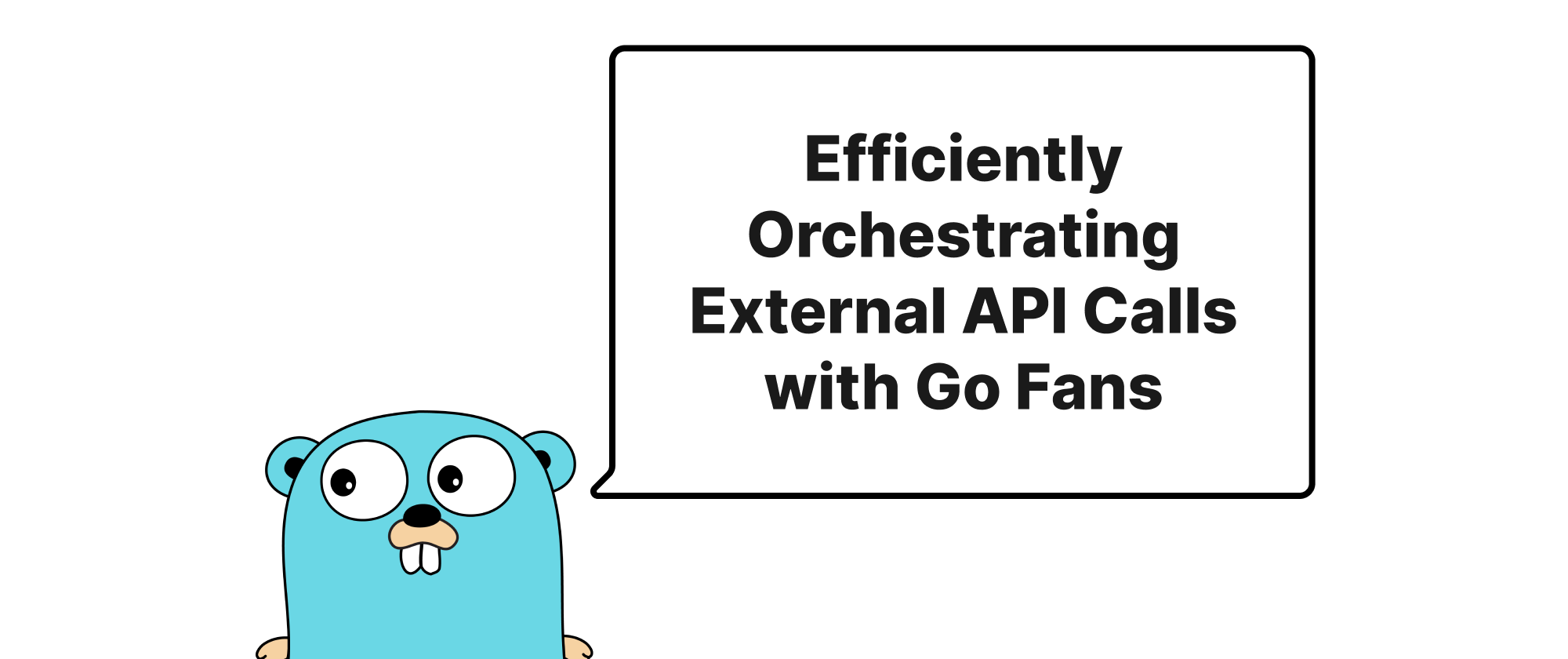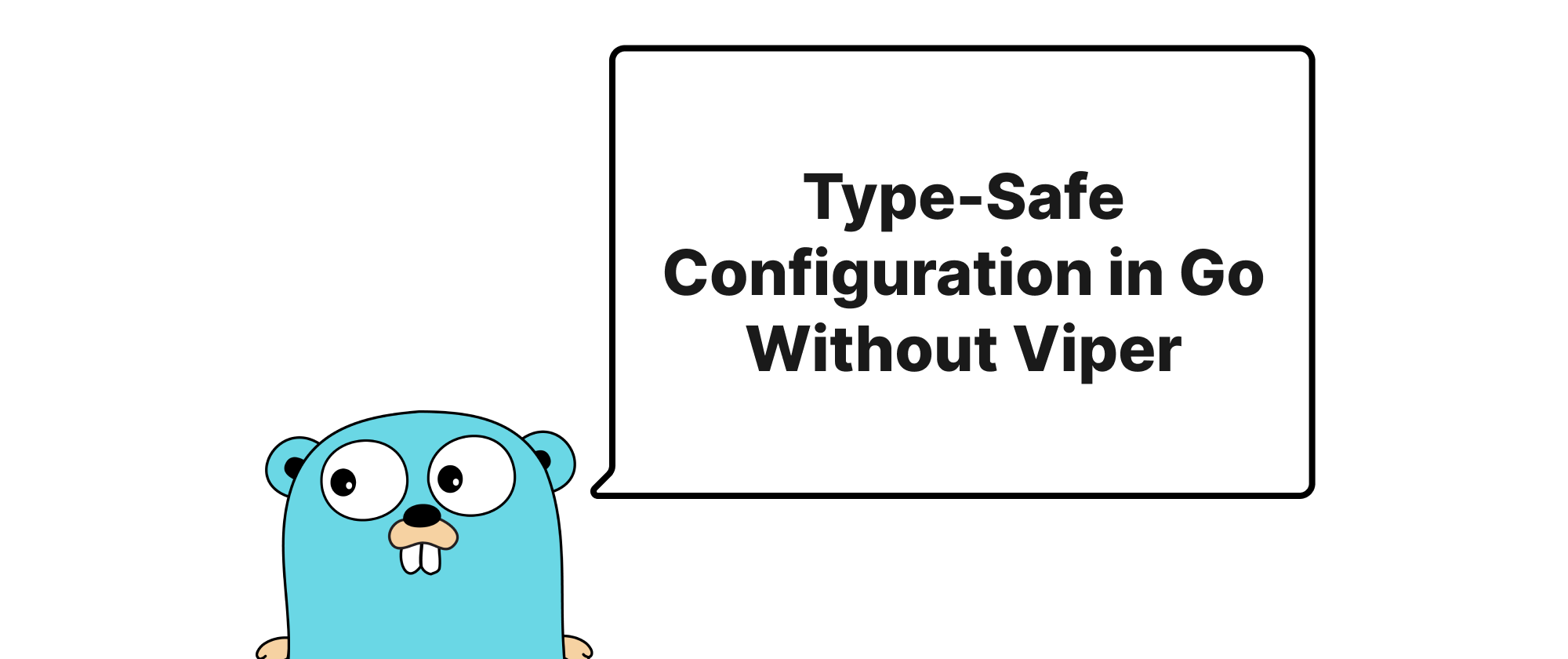From Monolith to Modularity Refactoring Go Web Applications
James Reed
Infrastructure Engineer · Leapcell

Introduction
In the vibrant world of Go development, it's common for a project to begin with a straightforward structure, often centered around a single main.go file. This approach offers rapid prototyping and quick development cycles, especially for smaller applications. However, as these projects evolve, grow in complexity, and attract more features and contributors, that initial simplicity often morphs into a significant bottleneck. A sprawling main.go file becomes difficult to navigate, challenging to debug, and nigh impossible to scale or maintain efficiently. This situation isn't just an aesthetic problem; it directly impacts developer productivity, introduces technical debt, and hinders future growth. This article will guide you through the process of dismantling such a monolithic structure and rebuilding it into a modular, maintainable Go web project, unlocking its full potential.
Deconstructing the Monolith
Before diving into the refactoring process, let's establish a common understanding of the core concepts that underpin our modularization efforts.
Core Concepts
- Monolithic Application: An application where all components (UI, business logic, data access) are tightly intertwined and deployed as a single, indivisible unit. While simple to start, it suffers from poor scalability, difficult maintenance, and high coupling as it grows.
- Modular Application: An application divided into distinct, independent modules or packages, each responsible for a specific functionality. These modules communicate through well-defined interfaces, reducing coupling and enhancing maintainability.
- Package (Go): Go's fundamental unit of code organization. Packages encapsulate related functionalities, enabling code reuse and promoting clear separation of concerns.
- Layered Architecture: A structural pattern where an application is divided into distinct layers, each with a specific role. Common layers include presentation (HTTP handlers), service (business logic), and repository (data access). This promotes separation of concerns and improves testability.
- Dependency Injection (DI): A technique where dependencies (e.g., a database connection) are provided to a component rather than the component creating them itself. This reduces coupling, makes components more independent, and simplifies testing.
The Pain Points of a Single main.go
A typical main.go in a burgeoning project might look something like this:
// main.go (Before Refactoring) package main import ( "database/sql" "encoding/json" "fmt" "log" "net/http" _ "github.com/go-sql-driver/mysql" // Example database driver ) // User represents a user in the system type User struct { ID int `json:"id"` Name string `json:"name"` Email string `json:"email"` } var db *sql.DB func initDB() { var err error db, err = sql.Open("mysql", "user:password@tcp(127.0.0.1:3306)/database") if err != nil { log.Fatalf("Failed to open database: %v", err) } if err = db.Ping(); err != nil { log.Fatalf("Failed to connect to database: %v", err) } fmt.Println("Connected to database successfully!") } func createUserHandler(w http.ResponseWriter, r *http.Request) { if r.Method != "POST" { http.Error(w, "Method not allowed", http.StatusMethodNotAllowed) return } var user User err := json.NewDecoder(r.Body).Decode(&user) if err != nil { http.Error(w, err.Error(), http.StatusBadRequest) return } stmt, err := db.Prepare("INSERT INTO users(name, email) VALUES(?,?)") if err != nil { http.Error(w, "Internal server error", http.StatusInternalServerError) log.Printf("Error preparing statement: %v", err) return } defer stmt.Close() result, err := stmt.Exec(user.Name, user.Email) if err != nil { http.Error(w, "Internal server error", http.StatusInternalServerError) log.Printf("Error executing statement: %v", err) return } id, _ := result.LastInsertId() user.ID = int(id) w.Header().Set("Content-Type", "application/json") json.NewEncoder(w).Encode(user) } func getUsersHandler(w http.ResponseWriter, r *http.Request) { rows, err := db.Query("SELECT id, name, email FROM users") if err != nil { http.Error(w, "Internal server error", http.StatusInternalServerError) log.Printf("Error querying users: %v", err) return } defer rows.Close() var users []User for rows.Next() { var u User if err := rows.Scan(&u.ID, &u.Name, &u.Email); err != nil { http.Error(w, "Internal server error", http.StatusInternalServerError) log.Printf("Error scanning user: %v", err) return } users = append(users, u) } w.Header().Set("Content-Type", "application/json") json.NewEncoder(w).Encode(users) } func main() { initDB() defer db.Close() http.HandleFunc("/users", getUsersHandler) http.HandleFunc("/users/create", createUserHandler) fmt.Println("Server listening on :8080") log.Fatal(http.ListenAndServe(":8080", nil)) }
This simple example already demonstrates several issues:
- Tight Coupling: Handlers directly interact with the database.
- Lack of Reusability: Database logic, business logic, and HTTP handling are all mixed.
- Difficult Testing: Testing individual components (e.g., just the data logic) is hard without also setting up HTTP servers.
- Poor Scalability: Adding new features becomes a game of finding space in
main.goand introduces potential regressions.
Refactoring to a Modular Structure
Let's refactor this into a more structured application. We'll aim for a layered architecture: handler (presentation), service (business logic), and repository (data access).
Step 1: Define the Application's Structure
A good starting point is to establish a clear directory structure:
├── cmd/
│ └── api/
│ └── main.go // Entry point for the API
├── internal/
│ ├── config/
│ │ └── config.go // Application configuration
│ ├── models/
│ │ └── user.go // Data structures (e.g., User struct)
│ ├── repository/
│ │ └── user_repository.go // Data access logic for users
│ ├── service/
│ │ └── user_service.go // Business logic for users
│ └── handler/
│ └── user_handler.go // HTTP request handlers for users
└── go.mod
└── go.sum
cmd/api: Contains the main entry point for our web API.internal/: Houses all application-specific code that shouldn't be publicly imported by other applications.config/: Manages application configuration.models/: Defines data structures.repository/: Abstracts data storage and retrieval.service/: Implements business logic.handler/: Contains HTTP request handlers.
Step 2: Extract Models (internal/models/user.go)
First, let's move our User struct to its dedicated models package.
// internal/models/user.go package models // User represents a user in the system type User struct { ID int `json:"id"` Name string `json:"name"` Email string `json:"email"` }
Step 3: Abstract Database Configuration (internal/config/config.go)
It's good practice to centralize configuration.
// internal/config/config.go package config import ( "database/sql" "fmt" "log" _ "github.com/go-sql-driver/mysql" // Example database driver ) // DBConfig holds database connection details type DBConfig struct { User string Password string Host string Port string Database string } // NewDBConfig creates a new default database config func NewDBConfig() DBConfig { return DBConfig{ User: "user", Password: "password", Host: "127.0.0.1", Port: "3306", Database: "database", } } // InitDatabase initializes and returns a database connection pool func InitDatabase(cfg DBConfig) (*sql.DB, error) { connStr := fmt.Sprintf("%s:%s@tcp(%s:%s)/%s", cfg.User, cfg.Password, cfg.Host, cfg.Port, cfg.Database) db, err := sql.Open("mysql", connStr) if err != nil { return nil, fmt.Errorf("failed to open database: %w", err) } if err = db.Ping(); err != nil { return nil, fmt.Errorf("failed to connect to database: %w", err) } log.Println("Connected to database successfully!") return db, nil }
Step 4: Implement Repository Layer (internal/repository/user_repository.go)
The repository handles all database interactions for User objects. It defines an interface for abstracting the storage mechanism.
// internal/repository/user_repository.go package repository import ( "database/sql" "fmt" "your_module_name/internal/models" // Replace your_module_name ) // UserRepository defines the interface for user data operations type UserRepository interface { CreateUser(user *models.User) (*models.User, error) GetUsers() ([]models.User, error) } // MySQLUserRepository implements UserRepository for MySQL type MySQLUserRepository struct { db *sql.DB } // NewMySQLUserRepository creates a new MySQLUserRepository func NewMySQLUserRepository(db *sql.DB) *MySQLUserRepository { return &MySQLUserRepository{db: db} } // CreateUser inserts a new user into the database func (r *MySQLUserRepository) CreateUser(user *models.User) (*models.User, error) { stmt, err := r.db.Prepare("INSERT INTO users(name, email) VALUES(?,?)") if err != nil { return nil, fmt.Errorf("error preparing statement: %w", err) } defer stmt.Close() result, err := stmt.Exec(user.Name, user.Email) if err != nil { return nil, fmt.Errorf("error executing statement: %w", err) } id, _ := result.LastInsertId() user.ID = int(id) return user, nil } // GetUsers retrieves all users from the database func (r *MySQLUserRepository) GetUsers() ([]models.User, error) { rows, err := r.db.Query("SELECT id, name, email FROM users") if err != nil { return nil, fmt.Errorf("error querying users: %w", err) } defer rows.Close() var users []models.User for rows.Next() { var u models.User if err := rows.Scan(&u.ID, &u.Name, &u.Email); err != nil { return nil, fmt.Errorf("error scanning user: %w", err) } users = append(users, u) } return users, nil }
Step 5: Implement Service Layer (internal/service/user_service.go)
The service layer contains the application's business logic. It orchestrates interactions between handlers and repositories.
// internal/service/user_service.go package service import ( "fmt" "your_module_name/internal/models" // Replace your_module_name "your_module_name/internal/repository" // Replace your_module_name ) // UserService defines the interface for user-related business logic type UserService interface { CreateUser(name, email string) (*models.User, error) GetAllUsers() ([]models.User, error) } // UserServiceImpl implements UserService type UserServiceImpl struct { userRepo repository.UserRepository } // NewUserService creates a new UserService func NewUserService(repo repository.UserRepository) *UserServiceImpl { return &UserServiceImpl{userRepo: repo} } // CreateUser handles business logic for creating a user func (s *UserServiceImpl) CreateUser(name, email string) (*models.User, error) { if name == "" || email == "" { return nil, fmt.Errorf("name and email cannot be empty") } // Example of business logic: check for existing email // (for brevity, not implemented here, but would involve another repo call) user := &models.User{Name: name, Email: email} createdUser, err := s.userRepo.CreateUser(user) if err != nil { return nil, fmt.Errorf("failed to create user in repository: %w", err) } return createdUser, nil } // GetAllUsers retrieves all users with potential business logic func (s *UserServiceImpl) GetAllUsers() ([]models.User, error) { users, err := s.userRepo.GetUsers() if err != nil { return nil, fmt.Errorf("failed to retrieve users from repository: %w", err) } return users, nil }
Step 6: Implement Handler Layer (internal/handler/user_handler.go)
The handler layer deals with HTTP requests and responses, delegating business logic to the service layer.
// internal/handler/user_handler.go package handler import ( "encoding/json" "net/http" "log" "your_module_name/internal/models" // Replace your_module_name "your_module_name/internal/service" // Replace your_module_name ) // UserHandler handles HTTP requests related to users type UserHandler struct { userService service.UserService } // NewUserHandler creates a new UserHandler func NewUserHandler(svc service.UserService) *UserHandler { return &UserHandler{userService: svc} } // CreateUserHandler handles POST requests to create a new user func (h *UserHandler) CreateUserHandler(w http.ResponseWriter, r *http.Request) { if r.Method != "POST" { http.Error(w, "Method not allowed", http.StatusMethodNotAllowed) return } var reqUser struct { Name string `json:"name"` Email string `json:"email"` } err := json.NewDecoder(r.Body).Decode(&reqUser) if err != nil { http.Error(w, "Invalid request body", http.StatusBadRequest) return } user, err := h.userService.CreateUser(reqUser.Name, reqUser.Email) if err != nil { http.Error(w, err.Error(), http.StatusBadRequest) // Often a 400 for business logic errors log.Printf("Error creating user: %v", err) return } w.Header().Set("Content-Type", "application/json") w.WriteHeader(http.StatusCreated) json.NewEncoder(w).Encode(user) } // GetUsersHandler handles GET requests to retrieve all users func (h *UserHandler) GetUsersHandler(w http.ResponseWriter, r *http.Request) { if r.Method != "GET" { http.Error(w, "Method not allowed", http.StatusMethodNotAllowed) return } users, err := h.userService.GetAllUsers() if err != nil { http.Error(w, "Internal server error", http.StatusInternalServerError) log.Printf("Error getting users: %v", err) return } w.Header().Set("Content-Type", "application/json") json.NewEncoder(w).Encode(users) }
Step 7: Reconstruct main.go (cmd/api/main.go)
The main.go file now acts as an orchestrator, setting up dependencies and wiring together the components. This is where Dependency Injection shines.
// cmd/api/main.go (After Refactoring) package main import ( "fmt" "log" "net/http" "your_module_name/internal/config" // Replace your_module_name "your_module_name/internal/handler" // Replace your_module_name "your_module_name/internal/repository" // Replace your_module_name "your_module_name/internal/service" // Replace your_module_name ) func main() { // 1. Initialize Configuration dbConfig := config.NewDBConfig() // 2. Initialize Database db, err := config.InitDatabase(dbConfig) if err != nil { log.Fatalf("Failed to initialize database: %v", err) } defer db.Close() // 3. Setup Repository Layer userRepo := repository.NewMySQLUserRepository(db) // 4. Setup Service Layer userService := service.NewUserService(userRepo) // 5. Setup Handler Layer userHandler := handler.NewUserHandler(userService) // 6. Register Routes http.HandleFunc("/users", userHandler.GetUsersHandler) http.HandleFunc("/users/create", userHandler.CreateUserHandler) fmt.Println("Server listening on :8080") log.Fatal(http.ListenAndServe(":8080", nil)) }
Key Takeaways from the Refactored Structure:
- Clear Separation of Concerns: Each package has a single, well-defined responsibility.
- Reduced Coupling: Components interact through interfaces (e.g.,
UserRepository,UserService), making them less dependent on concrete implementations. Changing the database from MySQL to PostgreSQL would only require creating aPostgreSQLUserRepositoryand changing one line inmain.go. - Improved Testability: Each layer can be tested in isolation. You can mock the
UserRepositoryto test theUserServicewithout a database connection, and mock theUserServiceto test theUserHandlerwithout a live database or complex business logic. - Enhanced Maintainability: Bugs are easier to locate, and new features can be added without extensively modifying unrelated parts of the codebase.
- Scalability: Allows for easier horizontal scaling of specific services if needed in a microservices context (though this pattern is beneficial for monoliths too).
Usage and Application
To run this restructured application, ensure you have a go.mod file:
go mod init your_module_name # Replace with your actual module name, e.g., github.com/yourusername/webapp go mod tidy
Then, from the root of your project, run:
go run cmd/api/main.go
You can then test the endpoints using curl or a tool like Postman:
- Create User (POST):
curl -X POST -H "Content-Type: application/json" -d '{"name": "Alice", "email": "alice@example.com"}' http://localhost:8080/users/create - Get Users (GET):
curl http://localhost:8080/users
This layered architecture provides a robust foundation for building maintainable and scalable Go web applications, moving beyond the limitations of a single, sprawling main.go file.
Conclusion
Refactoring a monolithic main.go into a well-structured, modular Go web project is a crucial step for long-term project health. By adopting a layered architecture and embracing concepts like packages and interfaces, we achieve clear separation of concerns, reduce coupling, and significantly boost testability and maintainability. This transformation empowers development teams to build more robust and scalable applications that adapt gracefully to evolving requirements.


